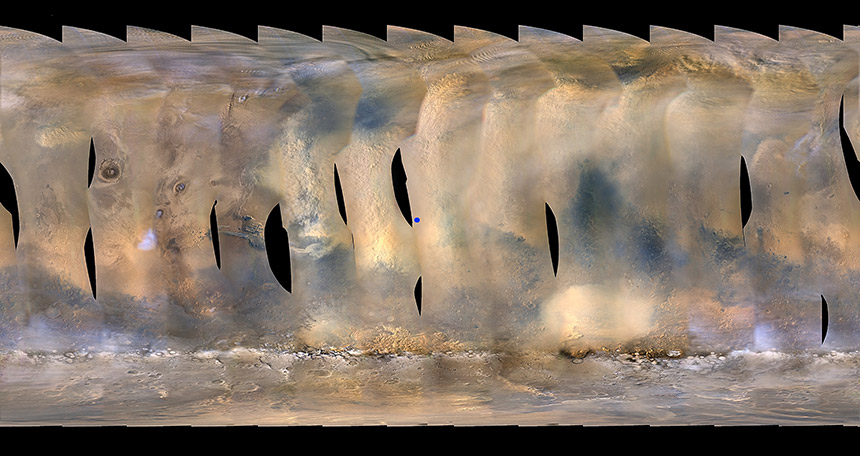Opportunity rover waits out a huge dust storm on Mars
The 14-year-old craft has weathered storms before, but none this big

HANG IN THERE This global map of Mars, produced by the Mars Reconnaissance Orbiter, shows a gathering dust storm, which has blanketed a portion of the planet and NASA’s Opportunity rover (marked with a blue dot).
JPL-Caltech/NASA, MSSS







